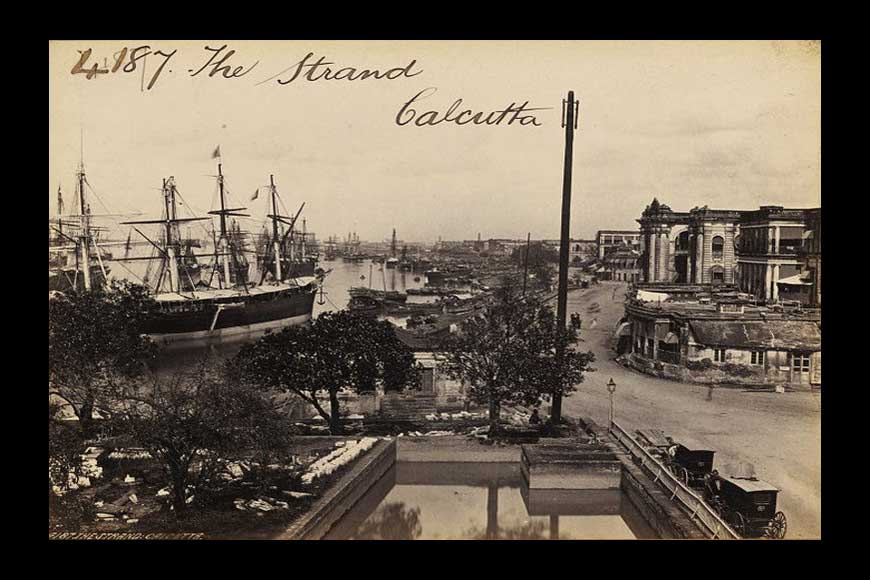Two centuries of Strand Road, the road carved out of a river - GetBengal story

See brother! The wretched victims of tyranny! The Crown Court was not surely established before it was needed. I trust it will not have been in operation six months before we shall see all these poor creatures comfortably clothed in shoes and stockings.” Thus reportedly spoke Sir Elijah Impey, chief justice of the Supreme Court of Judicature at Fort William, as he landed at Chandpal Ghat in 1774, and spotted the bare-bodied, barefoot ‘natives’ hanging around to catch a glimpse of the latest ‘sahib’ landing on Bengal’s soil.
The ghat at which Impey landed remained the first point of contact with India for many of his fellow countrymen and women for several years afterwards, but our interest lies in the wide thoroughfare which even today runs alongside Chandpal Ghat, and work on which began exactly 200 years ago. In other words, Strand Road. Also referred to as The Strand by the British, it runs along the east bank of the Hooghly, connecting Bagbazar to Prinsep Ghat. South of this ghat, Strand Road becomes St George’s Gate Road.
Work on this most important road began in 1823, and ended in 1828. Its construction was paid for by the Lottery Committee, a form of crowd funding that was abandoned in later years for various reasons. At the beginning of the 19th century, however, a lottery was still the most popular way to obtain large amounts of money for any purpose, whether it was for the building fund of St John’s Church, in aid of the Free School, for the sale of an indigo factory, or even the sale of a diamond ring. And it was such a Lottery Committee that raised the money for the construction of Strand Road, perhaps the most important thoroughfare of the city thus funded.
Also read : It is the British soil that formed Strand Road
According to H.E.A. Cotton in ‘Calcutta Old and New’ (1907), what was to become Strand Road was originally a sedge bank, sedge being a grasslike plant with triangular stems, growing typically on wet ground (sometimes referred to as ‘hogla’ in Bengali). In his book, Cotton writes that a large portion of the riverbank was reclaimed from the area around Prinsep Ghat and added to the new roadway.
A date would be fixed for the drawing, a committee of independent gentle-men would give their services to see that it was properly carried out, and there were always purchasers ready to take their chances, at prices ranging from one gold mohur (sixteen rupees) to several hundred rupees a ticket, according to the value of the prizes offered. These were usually very valuable, a first prize of one lakh of rupees, in cash, being not unusual.
By 1809, the lottery system had become official, and had been merged into a larger scheme of lotteries established “for the improvement of the town of Calcutta and its vicinity”. The ‘Calcutta Lotteries’ were now validated by an order of the Governor-General in Council, to be “conducted by a superintendent, aided by a registrar and examiner, under the immediate control of commissioners appointed by Government”.
When the idea of Strand Road first came up, the riverbank had moved between 50 and 250 yards (45 and 230 m) further westward than it did a century ago. Many prominent old Calcutta institutions came up on ground recovered from the river, such as the magnificent Metcalfe Hall, the Bank of Bengal (later Imperial Bank). An avenue of trees was planted on the riverbank from Chandpal Ghat to the ‘new’ and present day Fort William. This was known as Respondentia Walk, “where Calcutta society, alighting from carriages and palanquins, promenaded in the cool of the evening”. Most of the old walk later merged with the Eden Gardens (not the cricket stadium).










